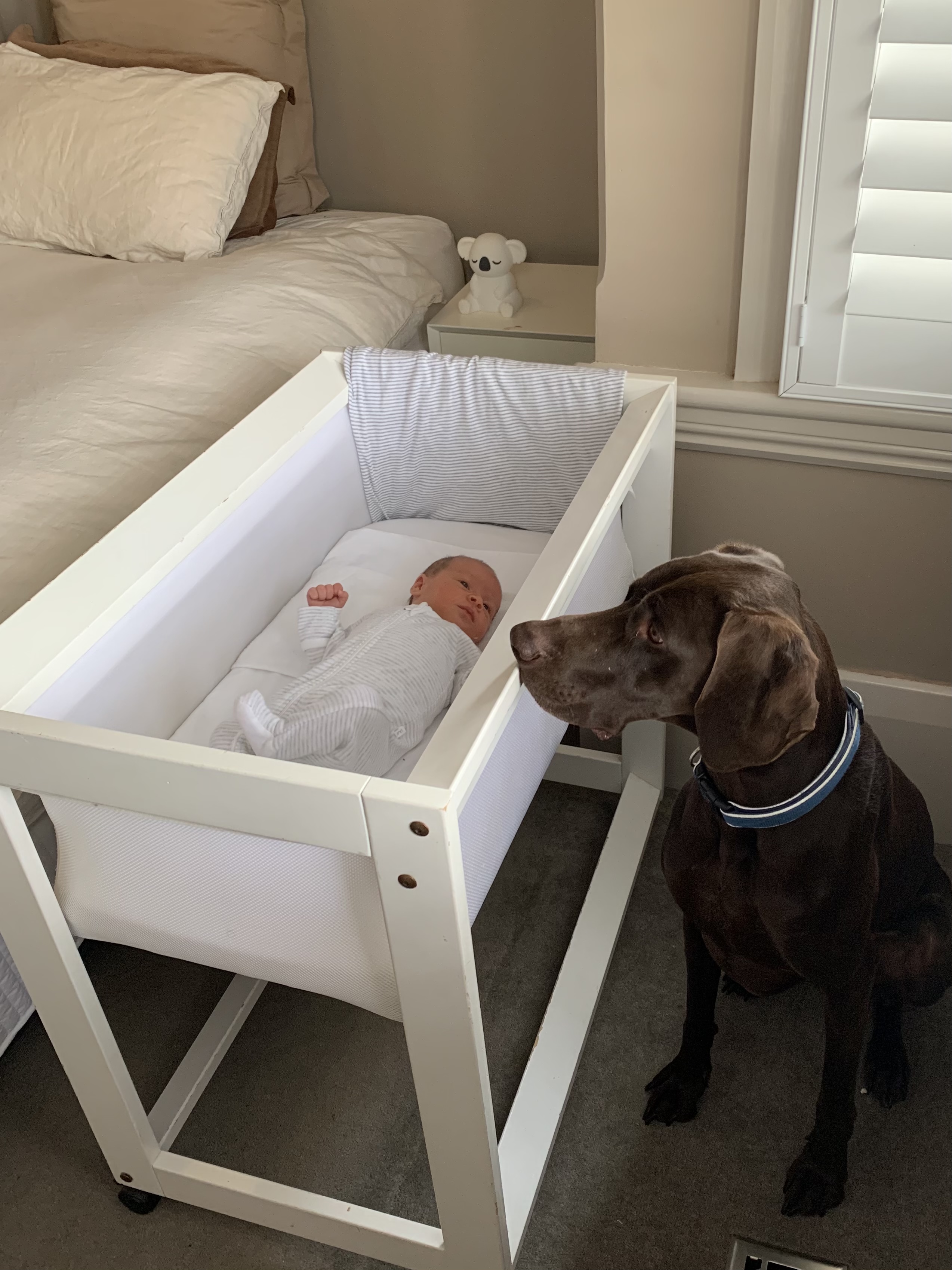Transition your dog from crate to bed at night by gradually introducing the bed and using positive reinforcement to encourage them to sleep there. This process may take time, so be patient and consistent with the training.
Transitioning your dog from sleeping in a crate to sleeping in a bed at night can be a gradual process that requires patience and positive reinforcement. By carefully introducing the bed and using rewards to encourage your dog to sleep there, you can help them make the transition comfortably.
It’s important to be consistent with the training and to give your dog time to adjust to the new routine. With patience and positive reinforcement, you can successfully transition your dog to sleeping in a bed at night.

Credit: cooperandkids.com
Understanding Your Dog’s Behavior
Help your dog transition from crate to bed at night by understanding their behavior. Start by gradually introducing the bed, using positive reinforcement and creating a comfortable environment. Pay attention to your dog’s body language and behavior to ensure a smooth transition.
| Understanding Your Dog’s Behavior |
| Canine Sleep Patterns |
| Dogs sleep differently than humans, with shorter sleep cycles. |
| They may wake up during the night out of habit or anxiety. |
| Anxiety Triggers |
| Noisy environments or being alone can trigger anxiety in dogs. |
| Transitioning your dog gradually from crate to bed can help reduce anxiety. |

Credit: www.buntypetproducts.co.uk
Assessing Your Dog’s Comfort In The Crate
When transitioning your dog from a crate to a bed at night, it’s important to assess your dog’s comfort in the crate before making any changes. Start by observing your dog’s behavior in the crate. Look for signs of anxiety or discomfort, such as pacing, whining, or excessive panting. Additionally, consider introducing comfort items in the crate, such as a favorite blanket or toy, to create a more inviting environment for your dog.
Gradual Transition Techniques
Transitioning your dog from the crate to a bed at night can be achieved using incremental time increases. Start by allowing your dog to spend a few minutes in the bed, gradually increasing the time. Positive reinforcement is crucial during this process. Reward your dog with treats and praise when they stay in bed. This will help them associate the bed with positive experiences. Be patient and consistent as you make this transition, and avoid forcing your dog into the bed. It’s important to make the bed a comfortable and inviting space for your dog, using their favorite blankets or toys. By following these techniques, you can successfully transition your dog from the crate to the bed at night.

Credit: www.reddit.com
Creating A Comfortable Sleep Environment
Transitioning your dog from crate to bed: Start by selecting a comfortable bed. Consider your dog’s size and sleeping preferences. Introduce the bed gradually during the bedtime routine. Encourage your dog to use the bed with positive reinforcement. Be patient and consistent in this transition process.
Dealing With Nighttime Anxiety
Transitioning a dog from crate to bed at night can be a challenging process. Behavioral training is essential to help the dog feel comfortable and secure in their new sleeping arrangement. It’s important to gradually introduce the dog to their new bed, using positive reinforcement and rewards to create a positive association. Calming aids such as soothing music or a comforting blanket can also help ease nighttime anxiety.
Consistency and patience are key as the dog adjusts to the new routine. Providing a safe and comforting environment will help the dog feel secure and reduce nighttime anxiety.
Monitoring Progress And Adjusting Strategies
Transitioning your dog from a crate to a bed at night requires monitoring progress and adjusting strategies. Tracking sleep patterns is an essential part of this process. Observe how long your dog sleeps and if they wake up during the night. Adapting to individual needs is also crucial. Some dogs may need a gradual transition, while others may adapt quickly.
Provide a comfortable bed and make sure your dog has access to water. Avoid punishing your dog for not sleeping in their bed and instead, use positive reinforcement. With patience and consistency, your dog will eventually feel comfortable sleeping in their bed at night.
Debunking Common Myths
| Debunking Common Myths | |
| Myth 1: Immediate Transition Is Best | Myth 2: Crate Equals Security |
Transitioning a dog from crate to bed can be a gradual process. Immediate switch may cause anxiety. The crate represents safety for dogs. Moving to bed should be done slowly. Positive reinforcement helps ease the transition. Remember, patience is key.
Seeking Professional Help If Needed
Transitioning your dog from crate to bed at night can be a smooth process with professional guidance. Seeking help from a veterinarian or a dog behaviorist can provide valuable insights and support. They can assess your dog’s needs and behavior to create a tailored plan for a successful transition. Professional help can address any anxieties or challenges your dog may have, ensuring a positive and comfortable experience for both you and your furry companion.
Frequently Asked Questions
When Should I Stop Crating My Dog At Night?
You should stop crating your dog at night when they can be trusted not to have accidents or cause destruction. This typically occurs around 6-8 months of age, but each dog is different. Gradually transition to leaving them out overnight to ensure they are comfortable and well-behaved.
How To Wean A Dog Off A Crate At Night?
To wean a dog off a crate at night, start by gradually leaving the door open and allowing your dog to roam free. Place a comfortable bed in a designated area and provide plenty of toys to keep them occupied.
Increase the time your dog spends outside the crate each night until they no longer need it. Consistency and patience are key.
When Should I Trust My Dog Out Of His Crate At Night?
Trust your dog out of the crate at night when they can hold their bladder, show good behavior, and are comfortable sleeping outside the crate. Gradually increase freedom based on their progress.
Why Won’t My Dog Sleep In His Crate At Night Anymore?
Your dog may not sleep in the crate due to discomfort, anxiety, or a negative association. Assess the crate setup and comfort level. Gradually reintroduce positive crate experiences to help your dog feel secure and relaxed at night.
Conclusion
It may take time and patience to transition your dog from a crate to a bed at night, but it can be a positive change for both you and your furry friend. By gradually introducing them to their new sleeping area and providing comfort and reassurance, you can help your dog feel secure and relaxed at bedtime.
Remember to always prioritize your dog’s safety and well-being, and consult with a veterinarian or professional trainer if you encounter any difficulties. Happy sleeping!

Hello, I’m Ethan Mitchell. My passion is dog training and behavior enthusiasts. With years of experience working with various breeds, my goal at Dog Advisor Pro is to help dog owners build strong, loving relationships with their furry friends through effective training techniques. Understanding a dog’s behavior is the key to harmonious companionship. I am dedicated to sharing practical training tips that improve the lives of dogs and their owners.


